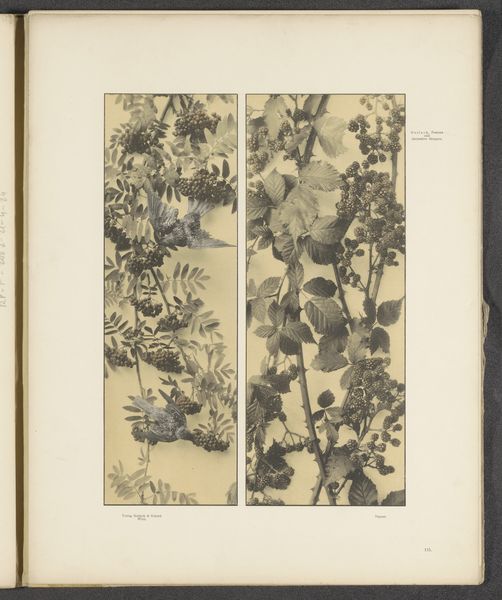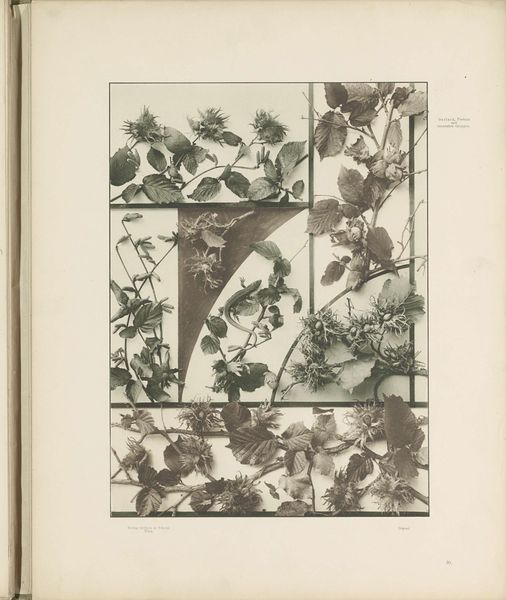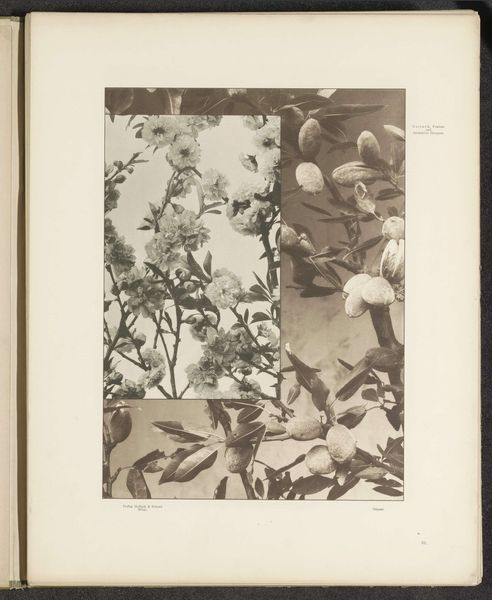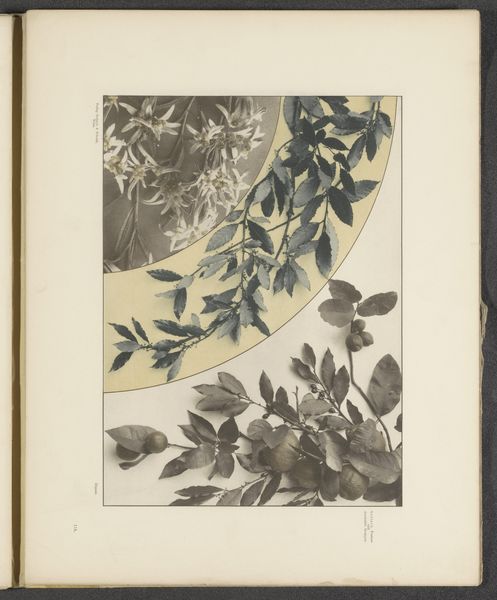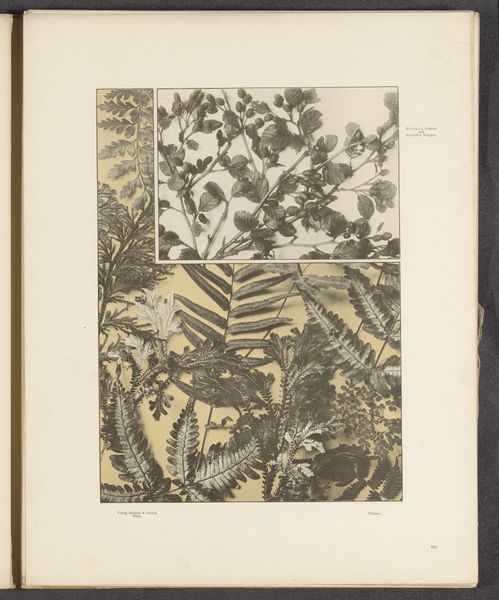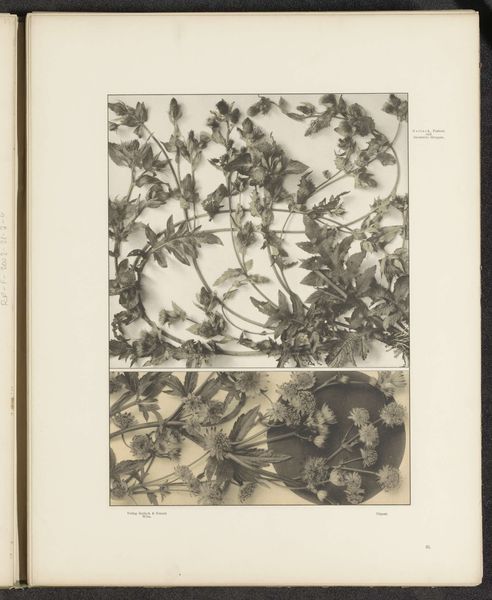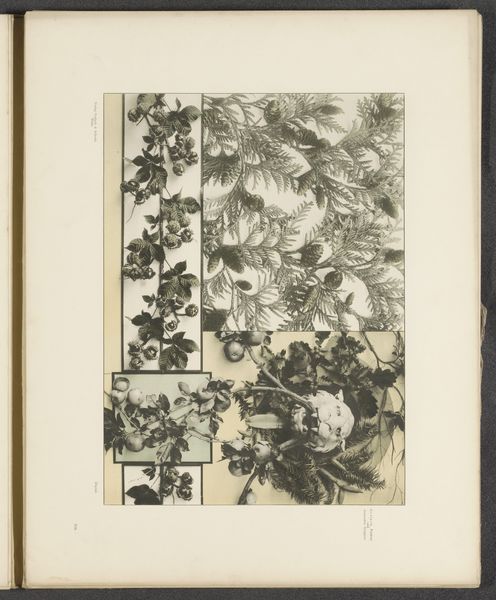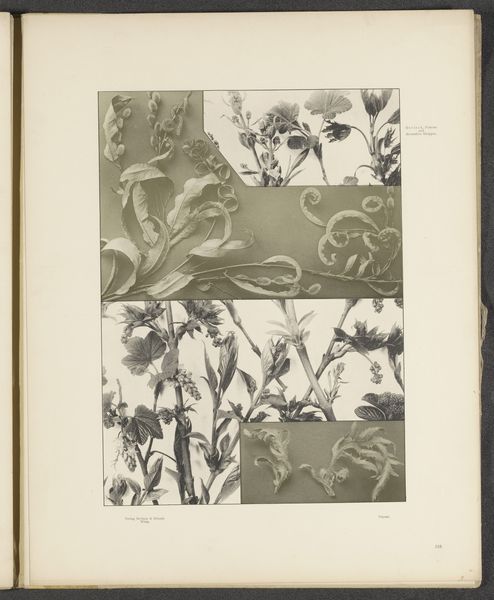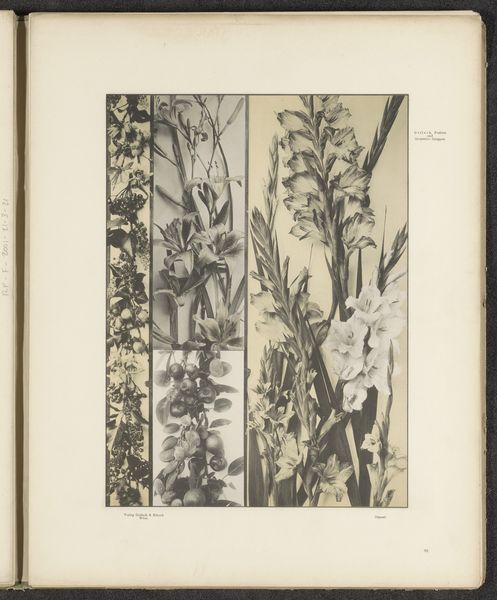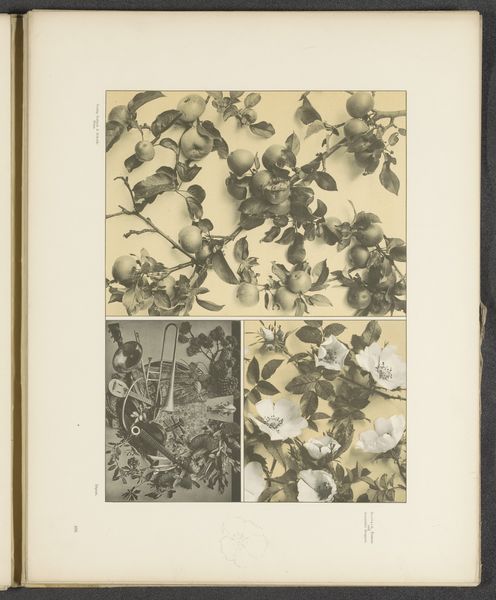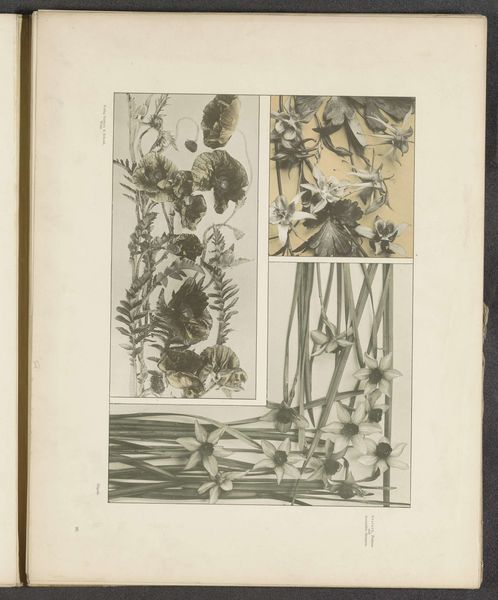
print, photography
# print
#
photography
Dimensions: height 320 mm, width 405 mm
Copyright: Rijks Museum: Open Domain
Editor: This print, entitled “Twee vlakken met trompetstruik en laurier” or “Two surfaces with trumpet vine and laurel,” dates to before 1897. The artist is unknown, and it seems to use photography as a medium. The composition, with two close-up plant studies stacked on top of one another, gives it a very methodical and somewhat clinical feel. What is your read on this piece? Curator: Well, that methodical feel may point us to its social function and how different ways of thinking and representation intertwine. Consider the rise of scientific botanical illustration and photography around this time, how knowledge was classified, organized and presented. This artwork isn’t just a depiction of plants; it's a product of the same impulse that fueled colonial expeditions, collecting, classifying and thus asserting a kind of power over the natural world. What are the implications, do you think, of viewing nature through this lens of control? Editor: I see your point! It’s almost as if the artist, in focusing so intently on the details, is trying to dissect and catalogue the plants rather than celebrate them. It's interesting how these 'objective' modes of representation can be used to establish a hierarchical relationship. The act of naming and framing something gives you control, right? Curator: Precisely! And who is afforded the power to name, to classify? What narratives are promoted, and whose are erased, through these systems? How does gender factor into that process of looking and claiming? Editor: Wow, I never considered photography and botanical illustration in this way. It’s almost like a visual extension of systemic power dynamics. Thanks for shedding some light on these fascinating layers. Curator: Gladly! It makes you consider what political issues lie implicit behind simple artistic expression.
Comments
No comments
Be the first to comment and join the conversation on the ultimate creative platform.


